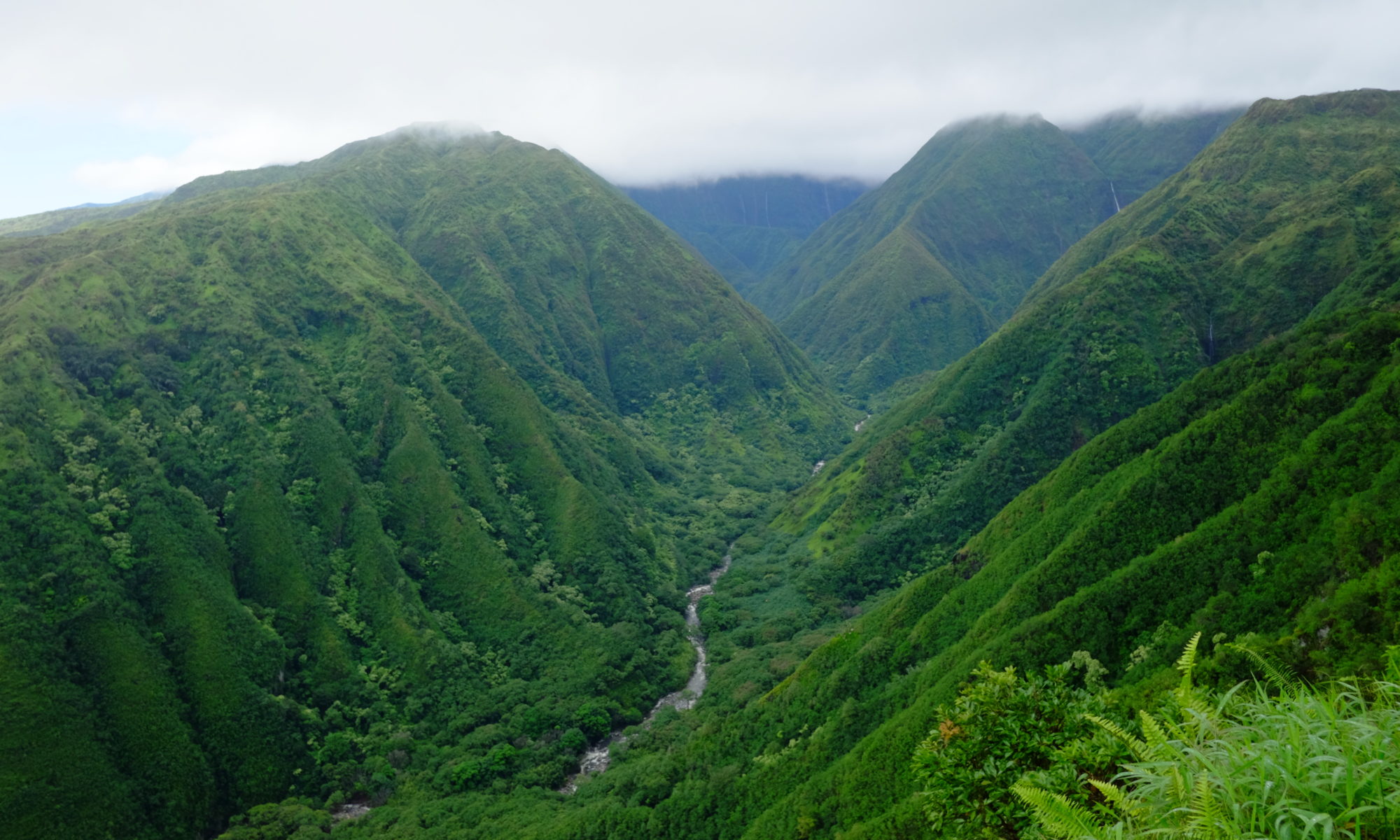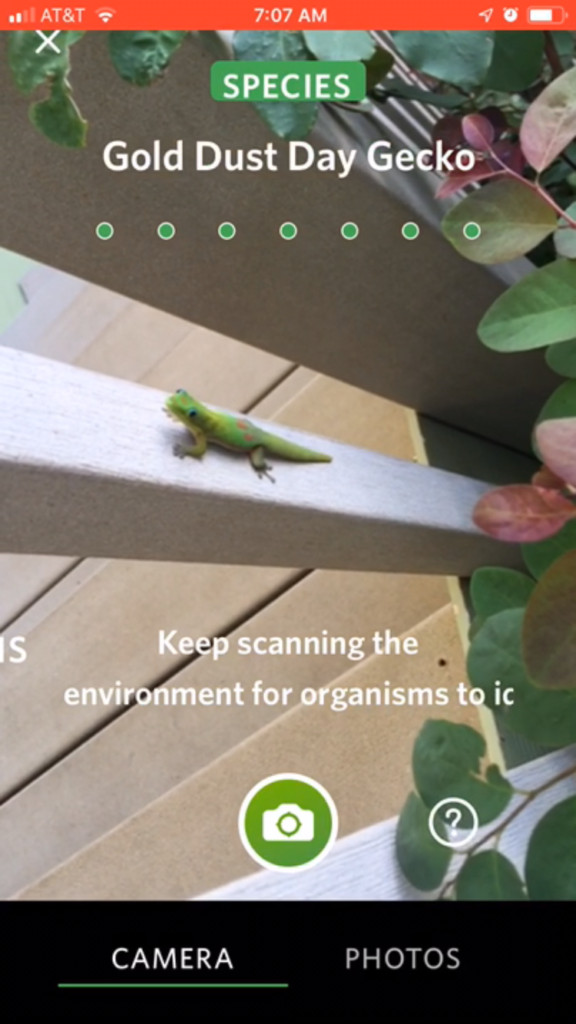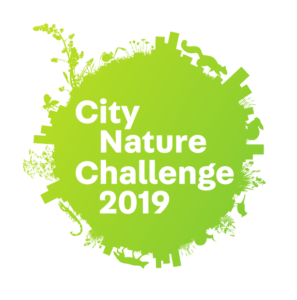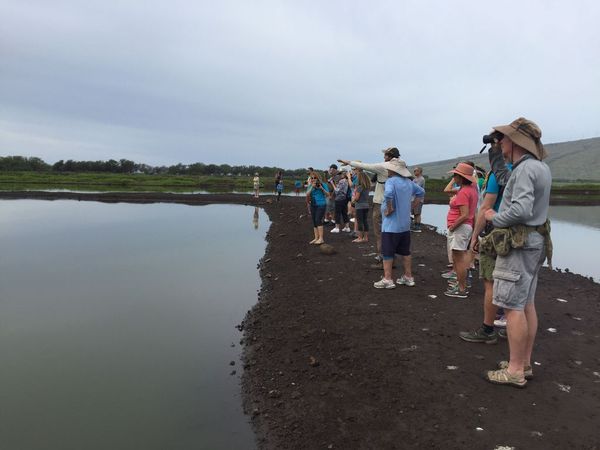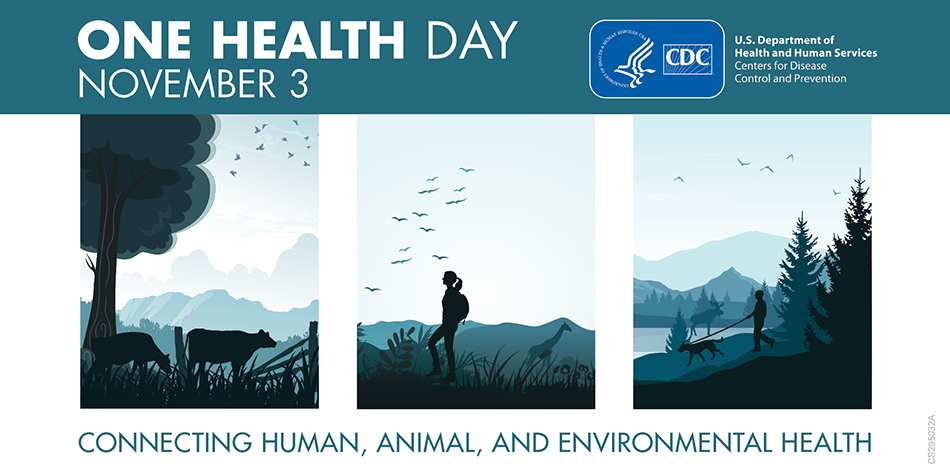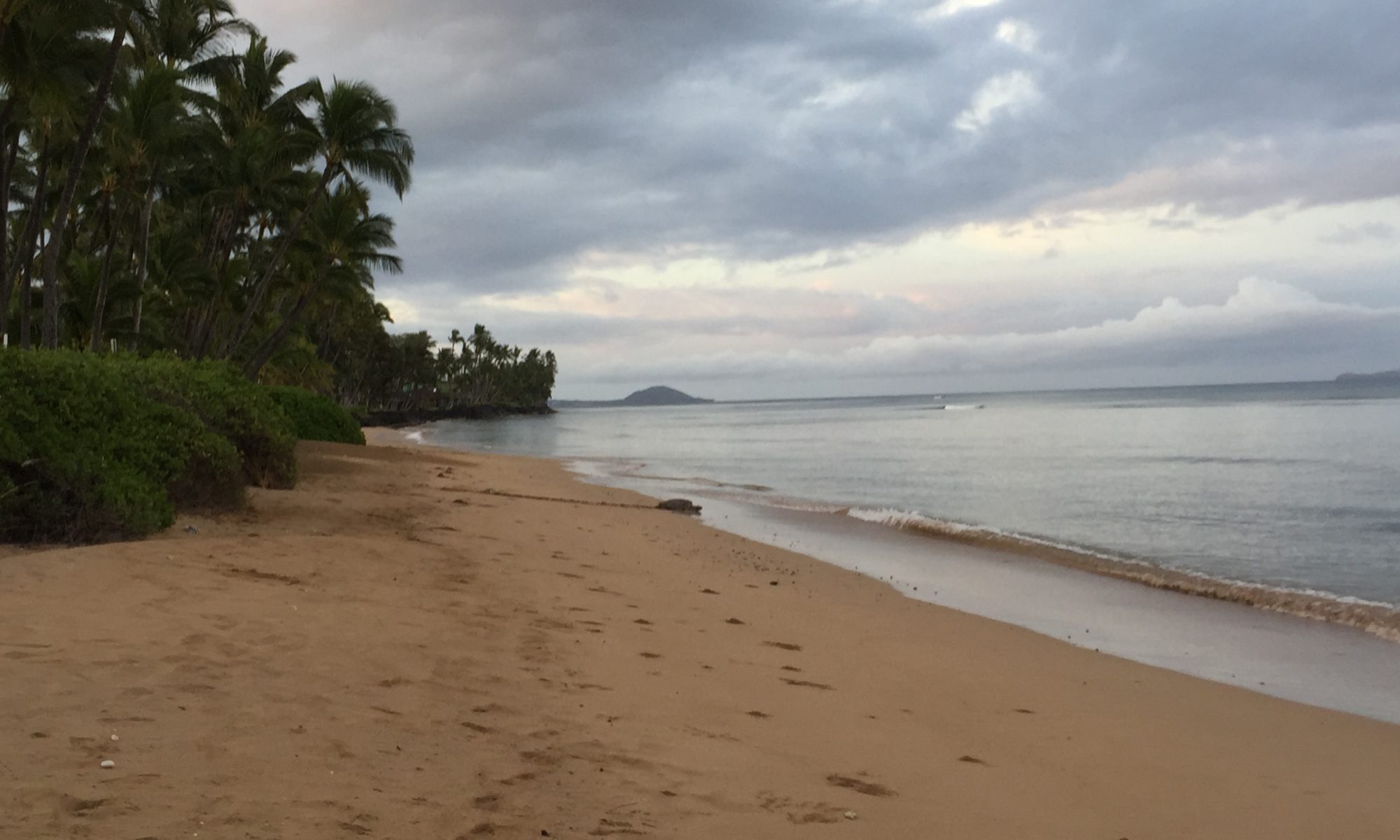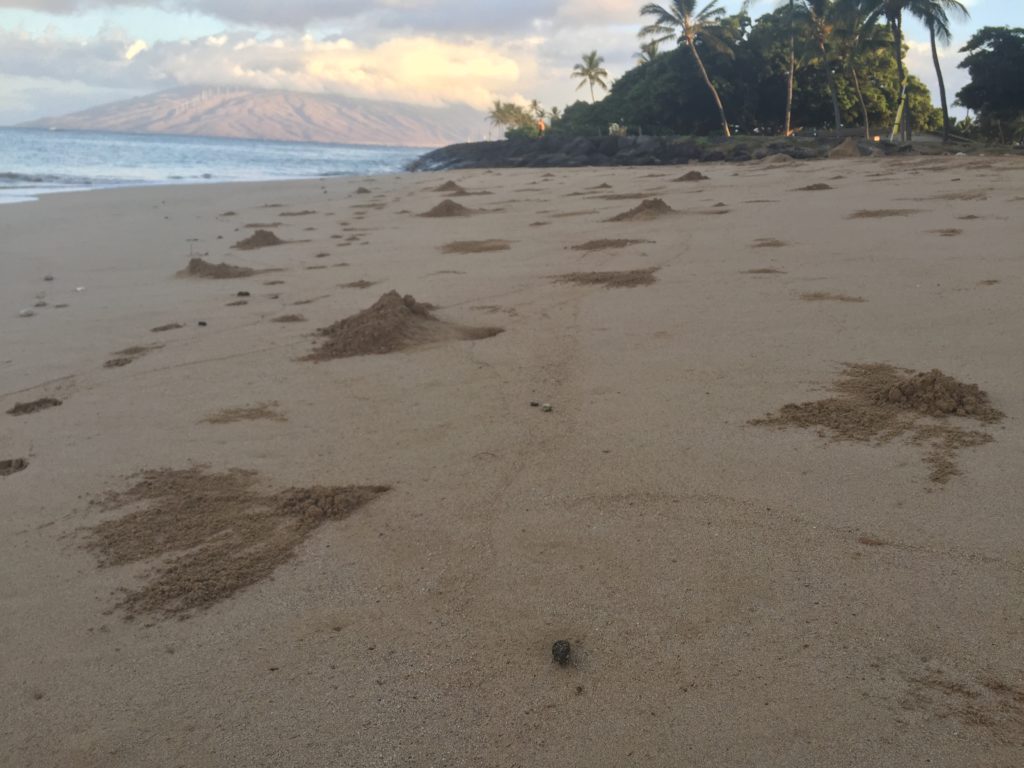I’ve worked with sea turtle conservation for a number of years and I knew that flipper tags (kinda like sea turtle ear-rings but for flippers) were a standard way to mark turtles for later identification. These tags help scientists track where turtles stay and migrate to, how old they grow, how fast they grow and more. I was surprised during an early morning walk along the beach in Kihei earlier this year when I saw a painted number on the shell of a female green sea turtle that was making her back back to the sea. This was not something I’d come across before.
A snippet from fall 2017 the Hawaiian Hawksbill Turtle newsletter had a clue:
“Some of the male and female Hawaiian green sea turtles that nested and basked all the way up in the Northwestern Hawaiian Islands (Papahanaumokuakea Marine National Monument) this past season can be identified by the temporary white letters/numbers the NOAA researchers painted on their carapaces. Their flipper tags are often more difficult to read, so these numbers truly help us understand their migratory patterns.”
I just sent in the observation to RespectWildlife@noaa.gov and will update this post if I get any information back. You can also call in sightings to the statewide marine wildlife stranding number here: +1(888)256-9840
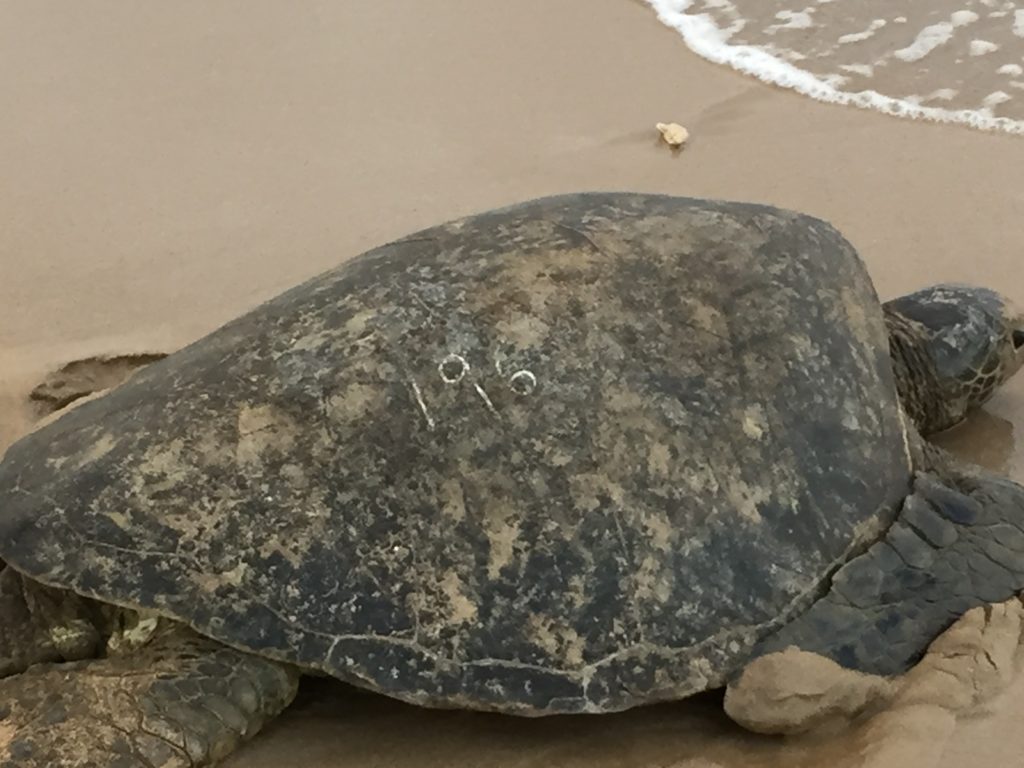
Hey, did you “just” see a turtle? Even without numbers, turtle sightings can be helpful. If you’d like to add your observations to a global community science project, check out http://inaturalist.org. BUT do remember… Sea turtles are threatened/endangered species. Any effort to take a photograph should be respectful and not alter their natural behavior.
Here are some recent observations:
